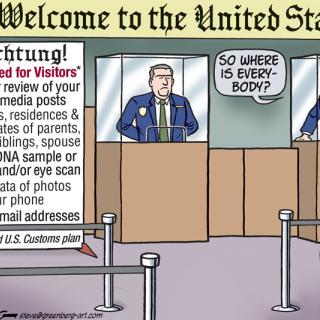Last week I saw a little African-American girl who looked to be about five years old walking with, I assume her mother. I then saw other young African-American girls entering an elementary school. They appeared to be between five and eight years old.
They were normal little girls. Running, laughing and looking happy to be going to school. They were of different hues of color, some short and some tall for their ages. They wore normal clothing for children their age. Most of them had something else in common. They were wearing fake hair. Hair that was long and almost for some, touching their backside. Hair that they had to brush out of their eyes as they ran to enter the school doors. Hair in styles that made them look like little women. Hair that clearly wasn’t their own.
It struck me that these young girls were being brainwashed into believing that their natural beauty wasn’t beautiful. That the hair that they were born with, was hair that wasn’t pretty. I felt immediate sorrow for these young girls. These young susceptible girls whose brains were being molded into the continued belief that being of African descent with “nappy” hair was not acceptable, desirable, fashionable or loveable by anyone, including their parents.
After all, these young girls didn’t have any control on what they were wearing. They didn’t buy the fake hair. They didn’t pay to have the fake hair weaved, or worse, glued into their heads. Somewhere along the line their parents decided that these beautiful brown girls weren’t beautiful enough to go out in public without first, making them look presentable. Was it the mother who made the decision to silently tell her daughter that she wasn’t “good enough” or was it the father, or lack of a father in the home, that encouraged his daughter to look like the women on the music videos?
I remember the seventies when wearing an Afro was a sign of pride. It was a time when people decided that they would wear their hair the way it was made to be worn. Natural and free of chemicals. That was the “brainwashing” of looks back then, the perm. The hot comb. Wigs were then and now popular and another way to change the appearance of the natural hair. But, the young girls could be natural back then and you didn’t see them with fake hair in elementary school. Now, you see them everywhere.
How do we change this so that young girls of color know that they don’t have to look like grown women to be pretty? How do we help them get their confidence back? The confidence that they are beautiful and that they don’t all have to have the same look. That they can be different. That they don’t have to spend hundreds of dollars on fake hair to be accepted. How do we get back to a time when young girls were just young girls, having fun, being their selves, loving their selves, loving each other for who and what they look like without any help from props?
One thing is for sure. The hair industry is making a whole lot of money from a whole lot of people. And most of these people can’t afford to keep food in the house, their utilities on in their homes, work minimal wage jobs and don’t have college educations or life insurance. But one thing they do have is “good hair.”



